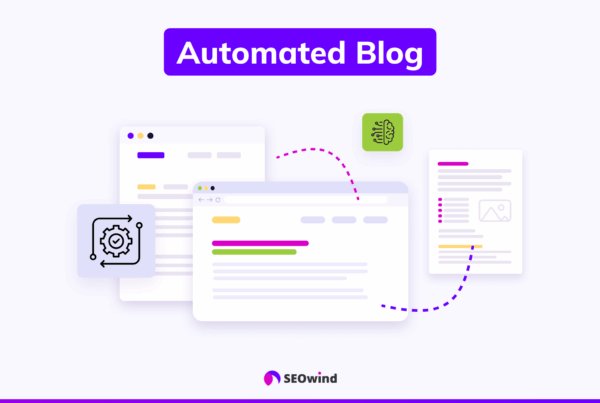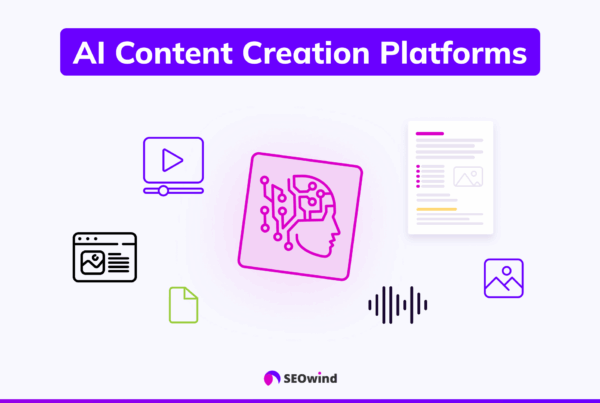The digital landscape is a battlefield where brands fight for attention. The weapon of choice? Content. Crafting high-quality, engaging content is an absolute necessity. But where do you even begin? How do you cut through the noise and make your voice heard? Well, that’s exactly why I’ve written this guide.
Here, we’ll explore the best practices for content creation in 2024. I’ll go through the details of strategizing, understanding your audience, leveraging AI, and creating content that truly resonates. From blog posts to videos, social media to ebooks, we’ll cover it all, equipping you with the knowledge and tools you need to conquer the content marketing arena.
Best Practices for Establishing Your Content Creation Strategy
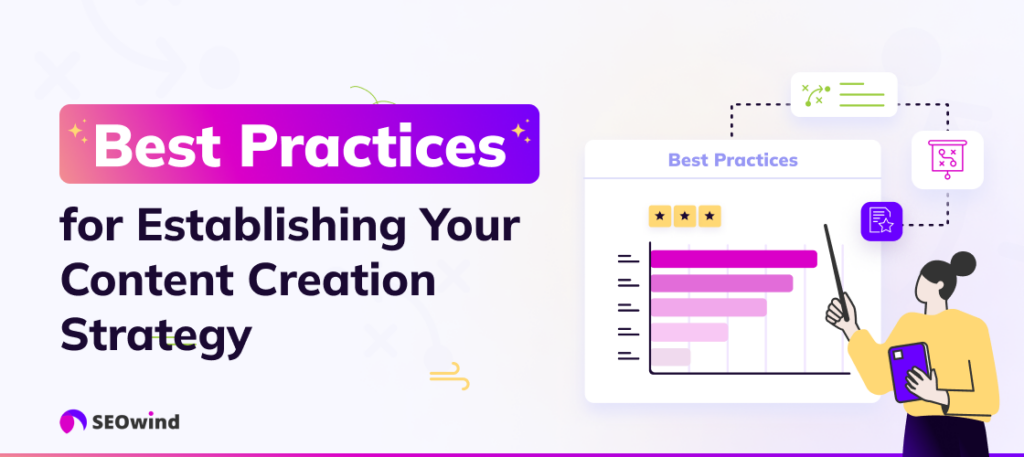
Let’s lay the foundation for content creation success. Before diving headfirst into writing and designing, it’s crucial to have a solid strategy in place. Think of it as your roadmap to content marketing victory.
1. Take the Time to Strategize and Plan
Imagine setting off on a road trip without a map or GPS. You might eventually reach your destination, but the journey would be riddled with wrong turns and unnecessary detours. Content creation without a strategy is much the same. You’ll waste time and resources on content that doesn’t resonate with your audience or achieve your goals.
So, how do you create a winning content strategy?
- Define your mission and vision: What do you want to achieve with your content? Is it brand awareness, lead generation, or thought leadership?
- Identify your target audience: Who are you trying to reach with your content? Understanding their demographics, interests, and pain points is essential for creating content that resonates with readers.
- Research your competition: Learn what your competitors are doing well and which gaps you can fill.
- Choose your content formats: Will you focus on blog posts, videos, infographics, or a mix of everything?
2. Set Clear, Achievable Goals
Goals provide direction and purpose. They help you stay focused and measure your progress. When setting goals for your content strategy, make sure they are SMART: Specific, Measurable, Achievable, Relevant, and Time-bound.
For example, instead of setting a vague goal like “increase website traffic,” aim for something more specific, such as “increase organic website traffic by 20% in the next quarter through SEO-optimized blog content.”
3. Know Your Audience: Creating Buyer and Audience Personas
Understanding your audience is paramount to creating engaging content. Buyer personas are fictional representations of your ideal customers based on research and data. They paint a picture of your target audience’s demographics, interests, pain points, and online behavior. This invaluable information guides your content creation efforts, ensuring that you’re speaking directly to your audience’s needs and desires.
Best Practices for Understanding and Catering to User Intent
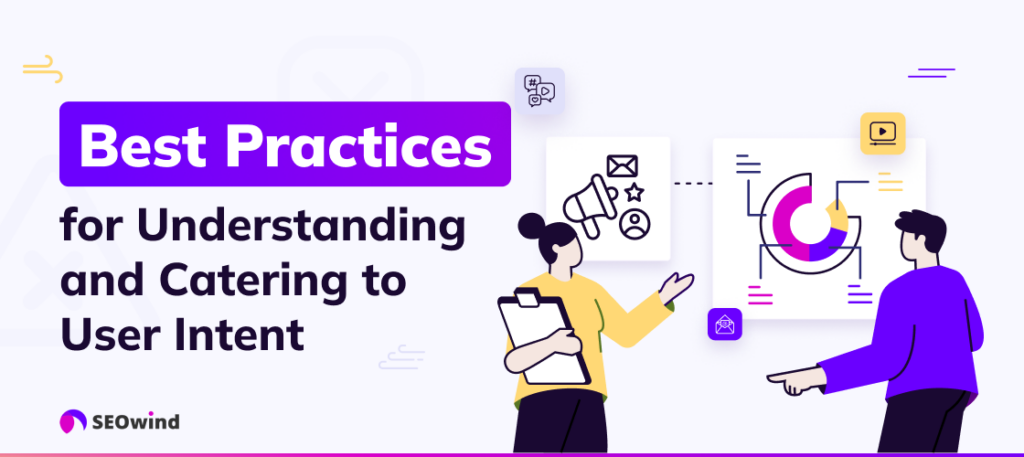
The digital landscape is crowded and overflowing with content vying for attention. For content creators, navigating this competitive environment requires more than just churning out articles and videos. We need to understand user intent – the reason behind every online search. When we grasp what users are really looking for, it becomes easier to tailor our content to those specific needs, enhancing its relevance and value. This is especially crucial for those of us creating content for brands. By aligning these assets with user intent, we attract a larger audience, cultivate stronger connections, and build trust with potential customers.
4. Identify Different Types of User Intent
Imagine you’re a detective piecing together clues to understand the motivations driving user behavior online. Catering to user intent effectively requires the identification of different types of searches users conduct:
- Informational Intent: This is the most common type of search, where users look for information on a particular topic. They might be looking for answers to specific questions, trying to understand a concept, or simply exploring a subject of interest. For example, a search like “how to make sourdough bread” clearly indicates informational intent.
- Navigational Intent: In this case, users have a specific website or online destination in mind. They might be looking for a particular brand’s website, a specific product page, or even a social media profile. For instance, a search like “Instagram login” signifies navigational intent.
- Transactional Intent: Users with transactional intent are ready to take action. They might be looking to make a purchase, sign up for a service, or download a resource. Searches like “buy running shoes online” or “best deals on flights to Paris” fall into this category.
- Commercial Investigation: This type of intent falls somewhere between informational and transactional. Users are considering a purchase or action but haven’t made a final decision. They’re actively researching and comparing options before taking the plunge. For instance, a search like “best laptops for students” or “reviews of iPhone 14” demonstrates commercial investigation intent.
5. Create User-Focused Content That Satisfies Search Intent
Once we understand the different types of user intent, we can create content that directly addresses those needs. Here are a few examples:
- For informational intent: Craft comprehensive blog posts, articles, and guides that provide in-depth information on relevant topics.
- For navigational intent: Ensure your website is well-organized and easy to navigate. Optimize your site structure and internal linking to help users find what they’re looking for quickly and efficiently.
- For transactional intent: Create product pages that are clear, concise, and persuasive. Highlight the benefits of your products or services and make the purchasing process as seamless as possible.
- For commercial investigation: Offer comparison guides, reviews, and case studies that help users make informed decisions.
6. Personalize Your Content
Considering user intent is a significant step toward creating relevant and engaging content. However, we can take it a step further by personalizing the experience for our audience. By leveraging data and technology, we can tailor content to individual preferences and behaviors, creating a more meaningful and impactful experience.
Best Practices for High-Quality Content Creation
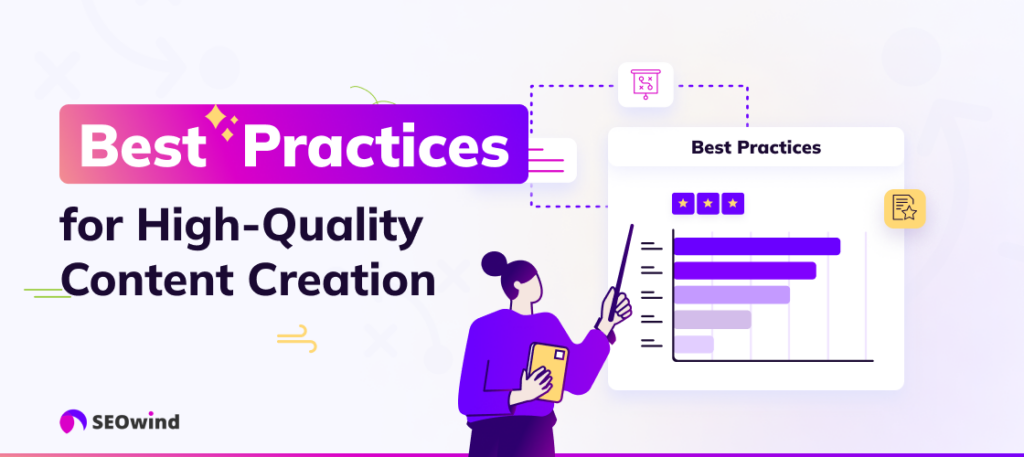
The cornerstone of a successful content strategy is high-quality content. But what exactly does that entail, and how do we achieve it? Let’s review the essential practices for creating quality content that resonates with your audience and drives results.
7. Prioritize Originality and Insight
In the vast ocean of online content, originality serves as a lighthouse that guides your audience toward your unique perspective. You’re not just looking to say something new but also say it in a way that only you can. Let your brand’s personality shine and don’t hesitate to offer your own take on industry trends or popular topics. Remember, your audience wants fresh perspectives and insights they won’t find elsewhere.
However, originality goes hand-in-hand with providing valuable and well-researched information. Ensure your content is factually accurate and up-to-date. Cite credible sources when necessary, and don’t be afraid to challenge conventional wisdom with your well-supported arguments.
8. Use AI to Your Advantage
The landscape of content creation is evolving rapidly, and AI is at the forefront of this transformation. While some may view this technology as a threat, I see it as a powerful ally, capable of enhancing and streamlining content creation in ways we never thought possible. AI-powered tools, like SEOwind, can assist with various aspects of content creation, from research and ideation to writing and editing.
9. Maintain Consistency Across All Platforms
Consistency is vital when it comes to building a strong brand identity and fostering trust with your audience. Maintaining a consistent voice, tone, and style across all platforms, including your website, social media, and email marketing, is crucial for creating a cohesive brand experience. This is where AI can be incredibly helpful. AI writing tools can analyze your existing content and learn your unique style, ensuring that all future content aligns with your established brand guidelines. This saves time and helps maintain consistency even as your content team grows or evolves.
10. Leverage Multimedia for Enhanced Engagement (Videos, Infographics)
Today’s audiences crave more than just plain text. They want engaging, visually appealing content that captures their attention and leaves a lasting impression. Incorporating videos, infographics, and other visual elements into your content strategy can significantly boost engagement and make your content more shareable.
AI tools can assist in this process as well. For instance, AI-powered video editing software helps you create professional-looking videos without extensive editing skills. In addition, AI-powered design tools can generate eye-catching infographics and other visuals that align with your brand aesthetics.
11. Establish Editorial Guidelines for Consistent Voice and Tone
Establishing clear editorial guidelines ensures consistency and quality across all your content. These guidelines should outline your brand’s voice, tone, style, and target audience and include specific instructions on grammar, punctuation, formatting, and other stylistic elements.
AI can help develop and maintain editorial guidelines. For example, automated writing tools analyze existing content and identify patterns in writing style, which can then be used to create a comprehensive style guide.
Best Practices for Producing Different Types of Content to Engage Your Audience
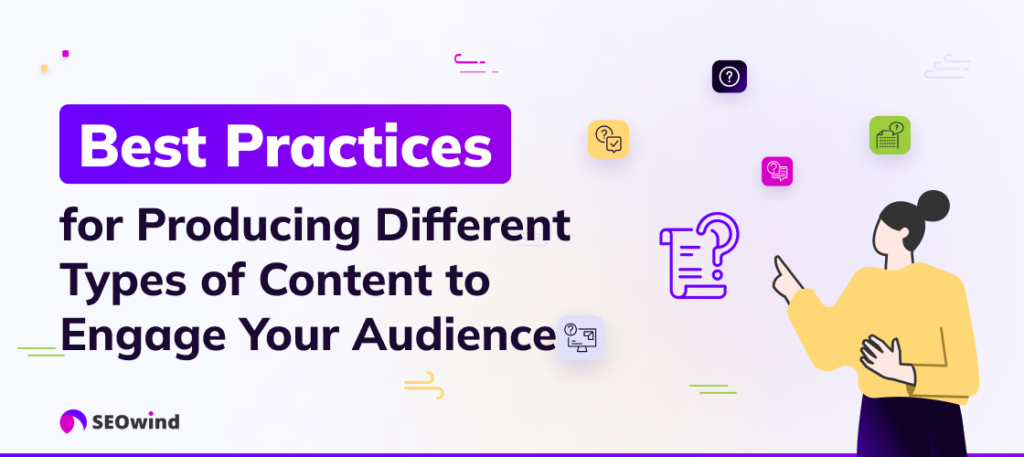
The online world thrives on diversity. Nobody wants to see the same type of content repeatedly. That’s why, as content creators, we need to keep our audiences engaged by offering a variety of content formats. This caters to different preferences and helps us reach a wider audience. So, let’s explore some effective content types to incorporate into your content creation strategy.
12. Detailed Guides and Ebooks
Providing in-depth guides and ebooks is a fantastic way to establish yourself as an authority in your field. This type of web content creation allows you to provide more detail on complex topics, offering your audience valuable insights and actionable advice. Ebooks and guides are also excellent tools for lead generation, as they often require users to provide their contact information for access, expanding your email list.
13. Videos and Podcasts: A Growing Trend
The popularity of videos and podcasts has skyrocketed, making them essential components of a successful content strategy. These formats offer a dynamic and engaging way to connect with your audience. Podcasts are perfect for sharing industry insights, interviews, and thought leadership pieces, while videos excel at showcasing product demos, tutorials, and behind-the-scenes glimpses into your brand.
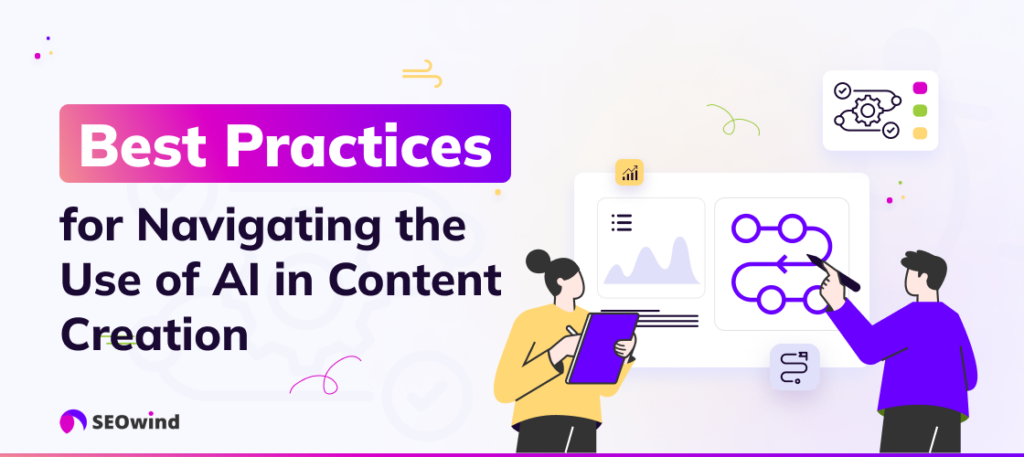
Content creation changes constantly and AI is now taking center stage. AI writing tools are revolutionizing how we approach content, offering a range of benefits from increased efficiency to enhanced creativity. However, it’s important to approach AI with a balanced perspective and understand both its strengths and limitations.
Benefits:
- Enhanced Efficiency: AI can automate repetitive tasks such as research, outlining, and even writing, freeing up your time to focus on strategic planning and creative brainstorming.
- Improved Productivity: With AI assistance, you can generate more content in less time, allowing you to maintain a consistent publishing schedule and meet deadlines efficiently.
- Data-Driven Insights: AI tools can analyze vast amounts of data to provide valuable insight into audience preferences, trending topics, and competitor strategies.
- Overcoming Writer’s Block: AI can help spark new ideas and overcome creative roadblocks by providing prompts, suggestions, and different writing styles.
Weaknesses:
- Lack of Originality: AI-generated content can lack originality and may require human intervention to ensure it is unique and engaging.
- Potential for Bias: AI algorithms can perpetuate biases present in the data they are trained on, so it’s crucial to review and edit AI-generated content carefully.
- Ethical Considerations: We have to use AI ethically and responsibly, ensuring transparency and avoiding plagiarism or the spread of misinformation.
- Overreliance: While AI is a powerful tool, it should not replace human creativity and critical thinking.
14. Use the CyborgMethod™
To harness AI’s full potential while mitigating its limitations, I recommend adopting the CyborgMethod™. This approach emphasizes the synergy between human expertise and AI capabilities. It enables us to achieve a collaborative partnership wherein AI handles the heavy lifting while you provide creative direction, critical thinking, and emotional intelligence.
By combining your unique insights with AI’s data-driven power, you can create content that is efficient, optimized, engaging, original, and resonates with your audience.
15. Best Tools for AI-Assisted Content Creation
Several AI-powered tools can assist you in your content creation journey. Here are a few examples:
- SEOwind: This long-form AI writer helps you create high-quality articles and blog posts based on comprehensive SEO and content research. It incorporates the CyborgMethod™ by allowing you to define your tone of voice, target audience, and company information to ensure the AI-generated content aligns with your brand identity.
- Jasper: A versatile AI writing assistant who can generate various content formats, including blog posts, social media captions, and marketing copy.
- Copy.ai: This platform offers a range of AI-powered writing tools, including blog post intros, product descriptions, and creative story ideas.
- Grammarly: While not strictly an AI writing tool, Grammarly uses AI to provide advanced grammar and style suggestions, helping you improve the clarity and effectiveness of your writing.
Remember, AI writing tools are meant to augment your skills, not replace them. By understanding the benefits and pitfalls of AI and adopting the CyborgMethod™, you can navigate content creation and create high-quality material that drives results.
Best Practices for Repurposing Content
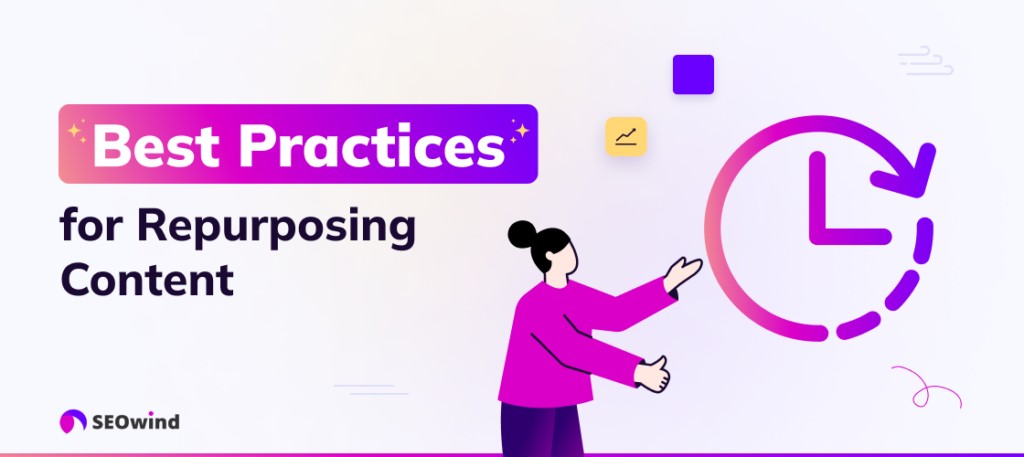
Imagine you’ve poured your heart and soul into crafting a fantastic blog post. It’s informative, engaging, and optimized for search engines. You hit publish, sit back, and wait for the traffic to roll in. But this single piece of content has so much more potential if you practice proper repurposing.
Repurposing content is the process of transforming existing content into different formats to cater to diverse preferences and platforms. Let’s review some best practices for repurposing content like a pro.
16. Identify Evergreen Content
Not all content is created equal. When selecting content for repurposing, focus on evergreen pieces – content that remains relevant and valuable over time. These could be blog posts that address fundamental industry concepts, comprehensive guides, or case studies showcasing timeless success stories. Evergreen content provides a solid foundation for repurposing efforts as it continues to attract and engage your audience long after its initial publication.
Transform Blog Posts into Different Formats
Blog posts are treasure troves of information waiting to be unleashed in various forms. Consider turning a series of related blog posts into a comprehensive ebook, offering in-depth knowledge to your audience. Alternatively, extract key points and statistics from your blog posts to create eye-catching infographics or engaging social media posts. You can even transform your written content into captivating video scripts or podcast episodes, expanding your reach to audiences who prefer audio-visual formats.
Best Practices for Content Optimization: Beyond the Basics
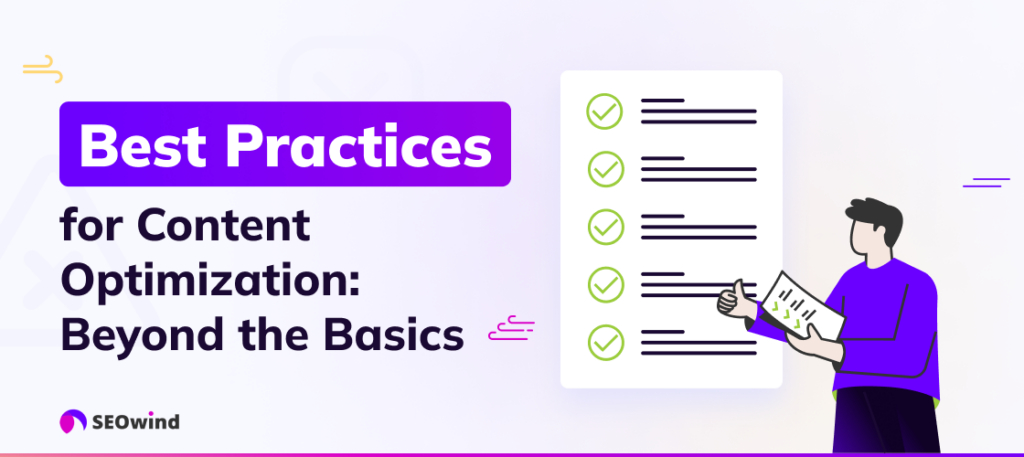
Picture a beautiful website—it’s visually stunning, easy to navigate, and filled with informative and engaging content. But how do we ensure people find it on the vast expanse of the Internet? Doing so takes more than incorporating keywords; we’ll have to understand the intricacies of search engine algorithms and user behavior, among other advanced SEO techniques.
17. Incorporate Advanced SEO Techniques
So, we know the basics of SEO: keyword integration, meta descriptions, and backlinks. But to truly excel, we need to think beyond the fundamentals. Let’s explore some advanced SEO techniques that can give your content an extra edge:
- Semantic SEO: Search engines are getting smarter and understanding the context and intent behind searches rather than just matching keywords. This is where semantic SEO shines. By incorporating synonyms, related keywords, and natural language, you can help search engines grasp the full scope of your content, leading to better rankings for a broader range of relevant searches.
- Schema Markup: This structured data vocabulary helps search engines understand your content better and can enhance your search results with rich snippets, like star ratings, images, or event details. Implementing schema markup can significantly improve your click-through rates and visibility.
- Internal Linking: Don’t underestimate the power of internal linking! By strategically linking to other relevant pages on your website, you can improve website navigation, distribute page authority, and keep visitors engaged with your content for longer periods of time.
18. The Art of Keyword Research and Topic Ideation
Keywords are the foundation of SEO, but effective keyword research goes beyond simply identifying high-volume terms. It’s about understanding the intent behind those keywords and aligning them with your target audience’s needs. Let’s break down the process:
- Identify Relevant Topics: Start by brainstorming topics relevant to your industry and audience. Consider the problems you solve for your customers and the questions they frequently ask.
- Keyword Research Tools: Utilize keyword research tools like SEMrush, Ahrefs, or Google Keyword Planner to identify specific keywords related to your chosen topics. Look for keywords with a good balance of search volume and competition.
- Long-Tail Keywords: Don’t just focus on broad, high-competition keywords. Long-tail keywords, which are longer and more specific phrases, often have lower competition and can attract more qualified leads.
- Analyze Competitor Keywords: See what keywords your competitors rank for to identify potential opportunities and gaps in your content strategy.
19. User Experience (UX) and Its Impact on Content Effectiveness
While SEO is crucial, don’t undervalue the human element. User experience (UX) plays a vital role in the effectiveness of your content. Even if you attract visitors through SEO, they won’t stay long or convert if your website is challenging to navigate or your content is hard to read. Here’s how to prioritize UX:
- Website Design and Navigation: Ensure your website has a clean, intuitive design with easy-to-use navigation. Users should be able to find the information they need quickly and effortlessly.
- Content Readability: Write clear, concise, and engaging content that is easy to read and understand. Use headings, subheadings, bullet points, and images to break up text and improve readability.
- Mobile Optimization: With the increasing use of mobile devices, ensuring your website is mobile-friendly is crucial. A responsive design that adapts to different screen sizes is essential.
- Page Speed: Nobody likes a slow-loading website. Optimize your page speed to ensure a smooth and seamless user experience.
Best Practices for Creating a Successful Content Promotion Strategy
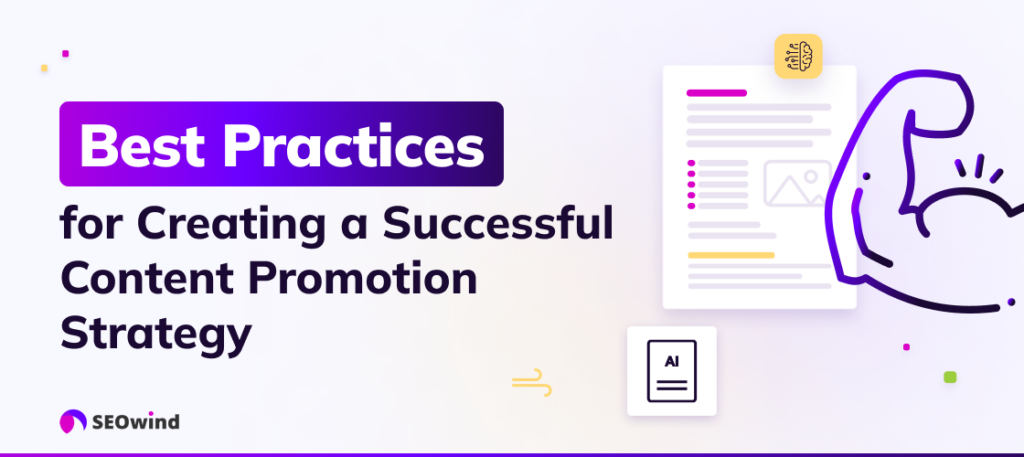
Once you’ve poured your heart and soul into crafting exceptional content, what comes next? How do you ensure your target audience actually sees it? At this point, you’ll need a robust content promotion strategy.
Promoting your content effectively isn’t just about haphazardly sharing it across various platforms and hoping for the best. You need to strategically leverage the proper channels to reach your specific audience and maximize your content’s impact.
20. Set Baselines and Track Results
Before diving headfirst into the exciting world of content promotion, let’s take a step back and do some groundwork. We must establish a clear starting point to measure the success of your promotional efforts effectively.
21. An Overview of Promotion Channels: Social Media, Email Marketing, Paid Ads
Now that we’ve established our starting point, let’s explore the diverse landscape of content promotion channels. Each channel offers unique advantages and caters to different audience segments, so a strategic mix is critical.
- Social Media: Platforms like Facebook, Instagram, Twitter, and LinkedIn offer incredible opportunities to connect with your target audience. Sharing engaging snippets of your content and eye-catching visuals can spark conversations and drive traffic to your website. Remember, each platform has its own personality, so tailor your approach accordingly.
- Email Marketing: Despite the rise of newer communication channels, email remains a powerful tool for nurturing leads and building relationships. Craft compelling email campaigns that deliver valuable content directly to your audience’s inbox. Segment your email list to ensure you send the right message to the right people at the right time.
- Paid Ads: While organic reach is valuable, sometimes a little boost can go a long way. Paid advertising options like Google Ads and social media ads can help you reach a wider audience and target specific demographics. Carefully consider your budget and campaign goals to ensure you get the most bang for your buck.
- Influencer Marketing: Collaborating with influencers in your industry can be an effective way to tap into their established audience and credibility. Look for influencers whose values align with your brand and who genuinely connect with their followers.
22. Measure Your Content for ROI
As you embark on your content promotion journey, it’s essential to monitor your return on investment (ROI) closely. By tracking key metrics, you gain valuable insight into what’s working and what’s not. This data empowers you to make informed decisions, optimize your strategies, and ensure your efforts generate tangible results.
Here are some essential metrics to monitor:
- Website Traffic: Observe how your promotional efforts impact the number of visitors to your website. Tools like Google Analytics provide a wealth of data on traffic sources, user behavior, and more.
- Engagement: Are people interacting with your content? Track metrics such as likes, shares, comments, and time spent on page to gauge audience interest.
- Lead Generation: Measure the leads generated through your content promotion campaigns. This can include email sign-ups, contact form submissions, and demo requests.
- Sales: Ultimately, the goal of most content marketing efforts is to drive sales. Track how your promotional activities contribute to your bottom line.
23. Maximize the Reach and Impact of Your Content
Content promotion isn’t a one-and-done deal. This is an ongoing process that requires continuous optimization and adaptation. As you gather data and insights, look for opportunities to refine your strategies and amplify the reach and impact of your content.
Best Practices for Analyzing and Measuring the Success of Your Content

Alright, folks, we’ve reached the part of the content creation journey where we assess how well our efforts have paid off. It’s time to analyze and measure the success of your content. This isn’t just about vanity metrics; we need to understand what resonates with your audience and use that knowledge to refine our strategies.
24. Key Metrics to Track Performance
- Website Traffic: This is a fundamental metric that gives you visibility into the number of visitors your content attracts. Keep an eye on overall traffic trends, traffic sources (organic search, social media, referrals, etc.), and the performance of individual pages.
- Engagement Metrics: These metrics tell you how users interact with your content. Look at the average time on the page, bounce rate, scroll depth, and click-through rate. For video content, track metrics like watch time and audience retention.
- Conversion Rate: This measures the percentage of users who take a desired action, such as signing up for a newsletter, downloading an ebook, or making a purchase. It’s a crucial indicator of how effective your content is at driving your business goals.
- Social Media Engagement: Track likes, shares, comments, and brand mentions to understand how your content performs on social media platforms.
- Backlinks: The number and quality of backlinks to your content are important indicators of its authority and value in the eyes of search engines.
25. Tools and Techniques for Analyzing Content Effectiveness
Thankfully, various tools help us gather and analyze these valuable metrics. Here are a few popular options:
- Google Analytics: This free tool is a must-have for any content creator. It provides comprehensive data on website traffic, user behavior, and conversions.
- Social Media Analytics Tools: Most social media platforms offer built-in analytics tools that provide insights into your content’s performance.
- SEO Tools: Tools like Semrush, Ahrefs, and Moz can help you track your search engine rankings, analyze backlinks, and research keywords.
- Content Analytics Platforms: Platforms like BuzzSumo and ContentStudio offer insights into web and social media content performance.
- Heatmaps and Session Recording Tools: Tools like Hotjar and Crazy Egg provide visual representations of how users interact with your website, allowing you to identify areas for improvement.
Remember, data is only as valuable as the insights you derive from it. So, don’t just collect data; analyze it, identify patterns, and use it to inform your content strategy.
